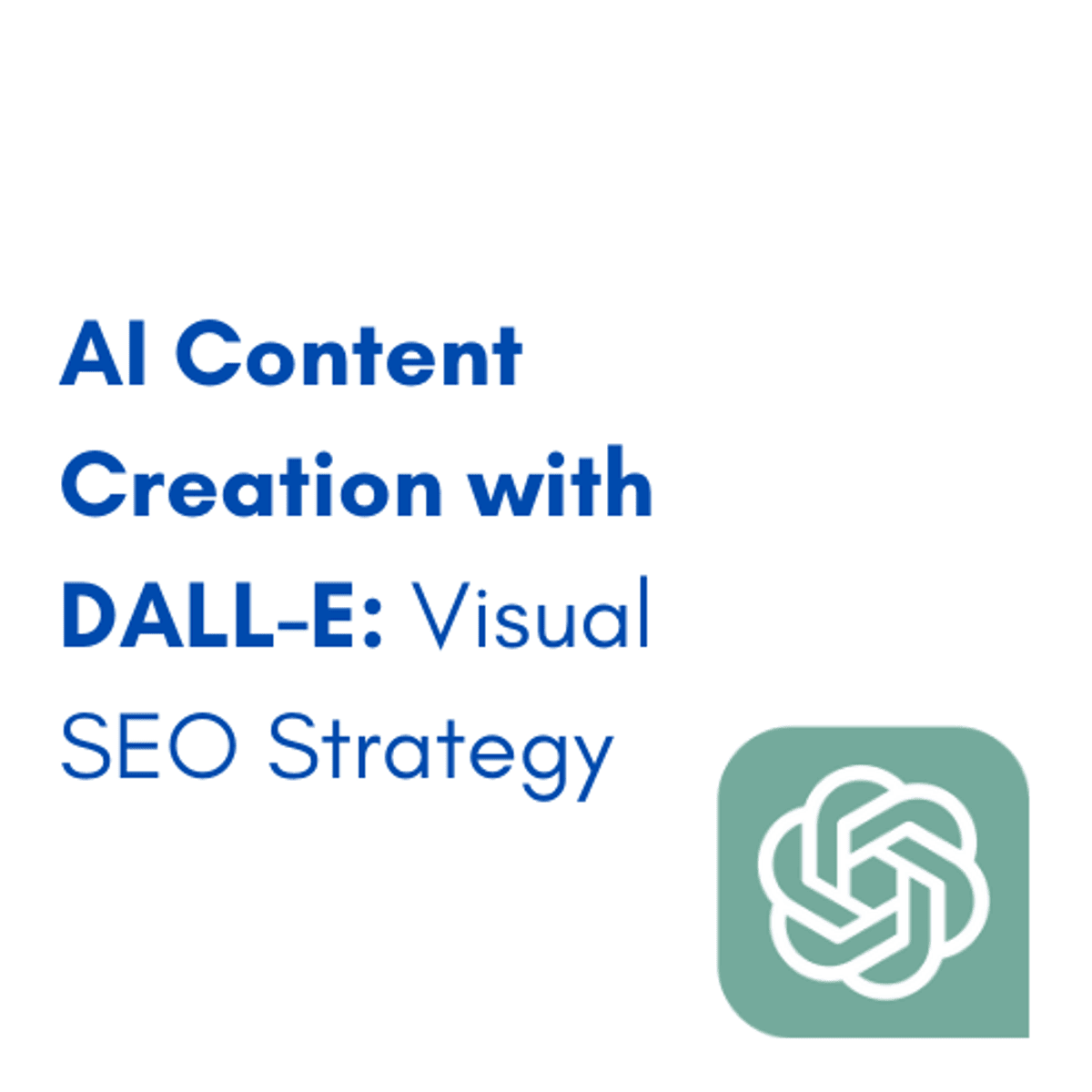Generative AI is reshaping the workplace, offering powerful tools to automate tasks, boost creativity, and enhance productivity.
For busy professionals, the challenge isn’t just understanding what generative AI can do—it’s knowing how to use it effectively without spending hours figuring it out alone.
That's where online courses can help.
Already, hundreds of these courses have landed on OpenCourser's catalog, some produced by the same companies behind the AI we use today. These courses can offer a structured, efficient way for you to gain practical skills and apply AI directly to your daily workflow.

In this article, we'll provide in-depth insights about what you as a busy professional need to know about generative AI. You'll understand how you can use AI in your work and learn how AI might shape your industry.
In the second half of the article, we'll provide a carefully curated list of course recommendations.
Why generative AI matters for working professionals
Generative AI refers to models that create content—such as text, images, or code—based on input data. Its applications are transforming various industries, but learning to use these tools effectively can seem daunting. Online courses bridge this gap, offering step-by-step guidance tailored to your professional needs.
Practical ways to use generative AI in your role
Generative AI is transforming the way professionals work across various industries, offering powerful tools to automate tasks, enhance creativity, and boost productivity. Whether you're managing projects, educating students, analyzing financial trends, or designing marketing campaigns, AI can streamline your workflow and open new possibilities.
By leveraging the right online courses, busy professionals can quickly learn to apply generative AI in practical, impactful ways without the steep learning curve. In this section, we’ll explore how generative AI can be tailored to different roles, providing real-world examples that showcase its potential to make your daily tasks easier and more effective.
Marketing
Generative AI revolutionizes marketing by automating content creation and enhancing personalization. Tools like ChatGPT can generate ad copy, social media posts, and email campaigns in minutes. This allows marketers to experiment with different messaging styles and tailor content to specific audiences quickly. Online courses teach prompt engineering and AI-assisted data analysis, helping marketers extract insights from customer data and craft targeted messages that resonate.
A key advantage is the ability to maintain consistency and brand voice while scaling content production. For example, an AI tool can generate multiple versions of product descriptions for different demographics, saving time and ensuring relevance. Courses often include case studies and practical exercises where you can apply these tools to real-world marketing scenarios.
Programming
Generative AI streamlines software development by automating repetitive coding tasks and providing code suggestions. Developers can use AI tools to write boilerplate code, generate unit tests, and debug complex scripts. This not only speeds up the development process but also reduces the likelihood of errors. Online courses in AI-assisted programming offer practical lessons on integrating these tools into your workflow, often with hands-on projects to solidify your understanding.
Additionally, AI can assist in learning new programming languages or frameworks. For instance, developers can use generative models to translate code from one language to another or understand syntax differences. An online course can guide you in setting up these tools and interpreting AI-generated code suggestions effectively.
Content creation
Generative AI is a game-changer for content creators, automating routine tasks such as drafting reports, creating blog outlines, and generating meeting summaries. These tools can produce high-quality first drafts in seconds, allowing writers to focus on refining content and adding a human touch. Online courses often include practical modules on using AI for different writing tasks, ensuring you get the most out of these tools.
Moreover, AI can enhance creativity by generating ideas or suggesting improvements. For example, a generative tool can provide alternative headlines or blog topics based on trending keywords. Learning platforms often include exercises where you can practice refining AI-generated content, helping you maintain originality and quality in your work.

Design
In design, generative AI tools like Midjourney or DALL-E can create stunning visuals based on simple text prompts. This allows designers to rapidly prototype concepts and explore creative directions without spending hours sketching. Online courses can teach prompt engineering techniques to help you generate more accurate and useful visual outputs, enhancing your workflow efficiency.
Beyond concept art, AI can assist in creating marketing materials, logos, and even website layouts. An online course might include projects where you use AI-generated images as a starting point, refining them into polished designs. This blend of AI assistance and human creativity accelerates the design process while maintaining artistic control.
Customer support
Generative AI can transform customer support by automating responses to common inquiries and improving chatbot capabilities. AI tools can analyze large datasets to predict customer needs and provide personalized support. Online courses often cover chatbot development, teaching you how to create AI models that understand and respond to various customer scenarios effectively.
Implementing AI-driven support systems also frees up human agents for more complex tasks, improving overall service quality. Courses may include practical exercises where you build and refine chatbots, ensuring they handle real-world queries accurately. This hands-on experience helps you deploy AI solutions that enhance customer satisfaction and efficiency.
Project management
Generative AI can significantly enhance project management by automating administrative tasks and improving decision-making processes. Tools can generate project timelines, draft status reports, or even create risk assessments based on historical data. Online courses often provide hands-on training on how to integrate these AI tools into your workflow, showing you how to customize outputs for specific projects. This can save project managers hours of manual work and reduce the chances of human error.
Beyond administrative tasks, AI can assist with strategic planning. For instance, generative models can simulate different project scenarios, helping managers anticipate potential challenges and adjust their strategies accordingly. Practical examples in courses might include creating dynamic Gantt charts or automating resource allocation reports, enhancing your ability to deliver projects on time and within budget.
Teachers and educators
Generative AI offers educators innovative ways to enhance lesson planning and student engagement. AI tools can create personalized learning materials, such as quizzes, assignments, or lesson plans, tailored to different student needs. Online courses on educational AI applications guide teachers through these tools, helping them design adaptive learning experiences that improve student outcomes. This allows educators to spend more time on interactive and meaningful classroom activities rather than administrative tasks.
AI can also assist in grading and feedback. For example, generative tools can evaluate essays or short responses, providing instant, constructive feedback that helps students learn more effectively. Online courses often include case studies or practical modules where educators can practice using AI-driven feedback tools, ensuring they implement these technologies ethically and effectively in their teaching practice.
Financial analysts
Generative AI can enhance financial analysis by automating data interpretation and report generation. Analysts can use AI to sift through large datasets, identify trends, and generate predictive models that inform investment strategies. Online courses in financial AI tools often include practical projects that simulate real-world scenarios, teaching analysts how to leverage these capabilities for more accurate and efficient forecasting. This reduces manual data crunching, allowing professionals to focus on strategic decision-making.
Another key application is automating routine reports and financial summaries. AI can generate insights from raw data and present them in clear, concise formats. For instance, an AI tool might automatically produce a monthly financial health report. Learning platforms often include modules where analysts practice using these tools, enhancing their ability to deliver actionable insights quickly and reliably.
HR professionals
HR professionals can use generative AI to streamline recruitment, onboarding, and employee engagement processes. AI tools can automate the creation of job descriptions, screen resumes, and even draft personalized onboarding plans. Online courses in AI for HR often cover these applications, providing step-by-step guidance on integrating AI into everyday tasks. This allows HR teams to reduce administrative burdens and focus on more strategic initiatives, such as talent development and culture building.
Generative AI can also support employee training and development. For example, AI can create customized learning paths or generate training materials based on individual employee needs. Online courses might include modules where HR professionals practice building AI-driven training programs, ensuring they can deliver personalized learning experiences that enhance workforce productivity and satisfaction.

Core skills for generative AI
Generative AI offers powerful capabilities, but to harness its full potential, professionals need to develop specific skills. These core competencies not only enhance efficiency but also ensure the quality and relevance of AI-generated outputs. Below, we’ll explore the essential skills required, from mastering prompts to fine-tuning models and working with structured data formats.
Prompting effectively
Effective prompting is the foundation of using generative AI successfully. Crafting clear, detailed prompts ensures the output aligns with your objectives. For instance, a vague request like "generate a report" might yield generic content, whereas specifying "generate a 500-word report on Q2 sales trends in the retail sector" produces more targeted results.
Online courses often include practical exercises to refine this skill, helping you understand how different phrasing impacts outputs. As you practice, you'll learn to include context, tone, and format details, which are crucial for generating content that meets specific needs.
Fine-tuning models
Fine-tuning involves customizing AI models to better suit your unique requirements or datasets. This process allows you to adjust an AI’s behavior, making its responses more accurate or relevant to your industry. For example, a healthcare provider might fine-tune a model to understand medical terminology better, improving diagnostic assistance tools.
Hands-on experience with fine-tuning often comes through specialized courses that guide you through real-world applications. These courses teach you how to train AI on domain-specific data, enhancing performance and reliability.
Describing roles and context
AI outputs improve significantly when you clearly define roles or provide context. Assigning a role, such as “act as a financial advisor” or “simulate a customer service agent,” guides the AI's tone and focus. This is especially useful for generating content that aligns with professional standards or industry-specific expectations.
Role-based prompting is a key component of many AI courses, which often include exercises that simulate different scenarios. These practical examples help you understand how to set clear contextual boundaries, improving the relevance and coherence of AI responses.
Outputting to structured formats like CSV and JSON
For many professionals, especially those working with data, the ability to generate structured outputs is essential. Generative AI can produce data in formats like CSV or JSON, which are crucial for automating workflows or integrating with other tools. For instance, you might use AI to extract information from customer reviews and output it as a CSV file for further analysis.
Learning to format outputs is often covered in technical AI courses. These modules provide step-by-step guidance on structuring prompts to ensure the AI generates clean, organized data. Mastering this skill not only streamlines data processing but also enhances your ability to use AI in complex, real-world applications.
Putting these skills together
Success with generative AI isn’t just about using the tools—it’s about mastering the skills that maximize their potential. By learning effective prompting, fine-tuning models, providing contextual clarity, and generating structured outputs, professionals can unlock AI’s full capabilities. Online courses offer a structured way to build these competencies, providing hands-on practice and real-world applications. As you develop these core skills, you’ll be well-equipped to leverage generative AI to enhance your work and drive innovation in your field.

How online courses streamline learning
Online courses offer a flexible and efficient way for busy professionals to master generative AI. They provide structure, guidance, and hands-on experience, helping you get up to speed quickly without disrupting your schedule.
Learn at your own pace
Flexibility is a major advantage of online learning. You can set your own pace, fitting lessons into your routine without feeling rushed.
- Study during short breaks or dedicate weekends to deeper dives
- Progress gradually to retain complex AI concepts better
- Review material as needed to reinforce understanding
Guided learning through complex processes
Generative AI involves intricate tasks, such as crafting effective prompts or fine-tuning models. Online courses offer expert-led guidance that simplifies these processes.
- Step-by-step tutorials break down challenging concepts
- Learn proven techniques to avoid trial-and-error frustration
- Follow structured pathways designed for practical outcomes
Hands-on experience with labs and projects
Practical application is key to mastering generative AI. Many courses include interactive labs and real-world projects.
- Apply theoretical knowledge in controlled environments
- Build projects like AI-generated campaigns or scripts
- Develop portfolio pieces that showcase your new skills
Immediate relevance to your job
Online courses often focus on industry-specific applications, making it easier to apply what you learn directly to your role.
- Choose courses tailored to your professional goals
- Implement practical use cases in marketing, programming, or management
- Gain skills that align with current workplace needs
Access to additional resources
Many courses offer supplementary materials and community support to enhance learning beyond the core content.
- Access articles, reading lists, and downloadable templates
- Participate in forums to ask questions and share insights
- Use resources as quick references for on-the-job tasks
By combining flexibility, expert guidance, hands-on practice, and job-focused content, online courses streamline the process of learning generative AI, helping you stay competitive and productive in your field.
Our course recommendations for learning AI
We've curated a comprehensive list of courses to help you get started using generative AI. These courses and collections are organized into categories to help you better navigate this long (and growing) list.
Building foundational knowledge
These courses offer broad overviews of generative AI concepts. They’re perfect for professionals starting their AI journey, covering basic principles, terminology, and the societal impact of AI.
Deeper dives into prompting
These courses focus on effective prompt engineering, model behavior understanding, and optimizing outputs for various applications. They tend to glaze over basic concepts and theory, jumping right into practice. As such, we recommend pairing these with one or two courses from the first list above.
Domain-specific applications
These courses help professionals integrate generative AI within specific industries, including education, marketing, and project management. They emphasize practical use cases and sector-focused strategies.
Technical fields: data science, programming, and cybersecurity
These courses cater to professionals in technical domains, including data science, software development, and cybersecurity. They focus on applying generative AI tools and techniques in technical workflows.
Tool-specific mastery
Designed for those who want to master generative AI tools like GitHub Copilot, Microsoft Copilot, and popular APIs, these courses focus on hands-on proficiency with specific platforms and tools.
Business leadership and strategy
Targeting executives and managers, these courses focus on integrating generative AI into organizational strategies, ensuring responsible implementation, and leading AI-driven transformations.
Content creation and art
These courses focus on using generative AI tools to create written content, visual art, and multimedia. They’re ideal for professionals in creative fields who want to enhance their workflows with AI.
Staying up to date with generative AI
Generative AI is evolving rapidly, but staying current doesn’t have to be overwhelming. Look for courses that offer:
- Updated content: Choose platforms that regularly refresh their material to reflect the latest AI developments.
- Community support: Some courses include access to forums or expert networks where you can ask questions and share insights.
- Supplementary resources: Books and articles recommended alongside courses provide deeper dives and broader context.
Tip: Set aside 15-30 minutes each week to explore AI trends or practice using new tools. This habit, combined with targeted online learning, keeps you agile and informed.






























































